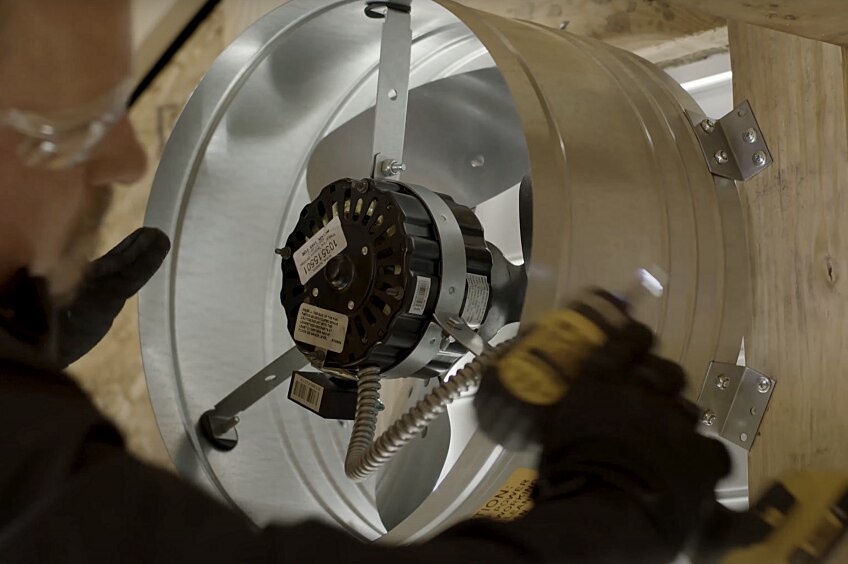Are you hearing strange noises coming from your attic, especially on windy days? You might think critters are running around up there, but, often, that banging or rattling can be chalked up to attic fan noise. In addition to wearing on your nerves, such noise could signify a larger problem and shouldn't be ignored.
Here's a look at why attic ventilation is crucial, as well as why your fan may be making noise and what to do about it.
Why Is Attic Ventilation So Important?
Ventilating the attic space in your home is important for your roofing system's performance. Proper ventilation works by drawing in outside air and expelling heat and moisture, which can be done using either passive static vents or electric and/or solar-powered attic fans.
A properly balanced attic ventilation system can reduce damaging heat and moisture that can lead to the premature deterioration of your roof.
Possible Reasons for Attic Fan Noise
You might be hearing noise coming from your attic fan for several reasons. Here are four potential issues to consider:
1. The Fan Wasn't Installed Properly
If the power attic fan wasn't properly leveled or secured, it could cause the vent to vibrate while in use, resulting in knocking or banging noises. And, even if properly installed, it could have shifted out of sync over time. Also, the electrical work required to hard-wire these kinds of fans to the power source can sometimes dislodge them from their proper mounting. Whatever the case, noise issues will likely result.
To avoid hard-wiring, consider a vent like the Master Flow EZ Cool™ Plug-in Power Attic Vent. It can be plugged into a standard 110v grounded electrical outlet, which will also eliminate the expense of an electrician.
2. The Fan Isn't Receiving Proper Air Flow
Powered attic fans move a lot of air. If your attic is closed off in a way that chokes off proper air flow from intake vents at or near the overhang of the roof, the most likely reason for the attic fan noise is that it isn't receiving enough air to exhaust.
If you have a window in the attic, opening it slightly can alleviate this issue. If you don't, contact a professional contractor. They'll be able to evaluate your ventilation intake options for reducing or eliminating the noise.
3. The Fan Is Wearing Out
If your power attic fan is older, the bearings may be either wearing out or the blades may be bent, causing an uneven, noisy operation. Noise may also be coming from your fan motor if it's nearing the end of its service life. Replacing the attic fan with a new model could solve the problem and reduce or eliminate the excessive sound you hear.
4. It's Not Your Attic Fan but Another Vent Causing Noise
Sometimes you might experience noise from a goose neck vent damper that slams shut when the wind is blowing. In this case, the solution may be as simple as replacing your existing goose neck vent with a new one, such as a GAF Master Flow® Goose Neck Vent.
Are All Attic Fans Noisy?
Any piece of mechanical equipment with moving parts is a potential noise-maker, but advancements in today's power attic fans have made them much quieter while running. Some fans even incorporate smart technology to allow homeowners to control the operation from a smartphone or tablet. For instance, the gable-mounted GAF Master Flow® Wi-Fi Attic Vent features QUICKCONNECT™ Wi-Fi Technology to make monitoring and adjusting the vent simple and easy. This allows you to control the vent humidistat and thermostat via an app, all from the comfort of your living room (or anywhere you have an internet connection).
If you're experiencing attic fan noise, contact a roofing professional certified by GAF*. They'll be able to diagnose the issue while also making sure your attic space is adequately ventilated.
*Contractors enrolled in GAF certification programs are not employees or agents of GAF, and GAF does not control or otherwise supervise these independent businesses. Contractors may receive benefits, such as loyalty rewards points and discounts on marketing tools from GAF for participating in the program and offering GAF enhanced warranties, which require the use of a minimum amount of GAF products.

